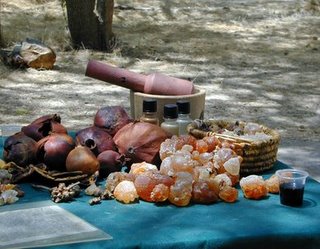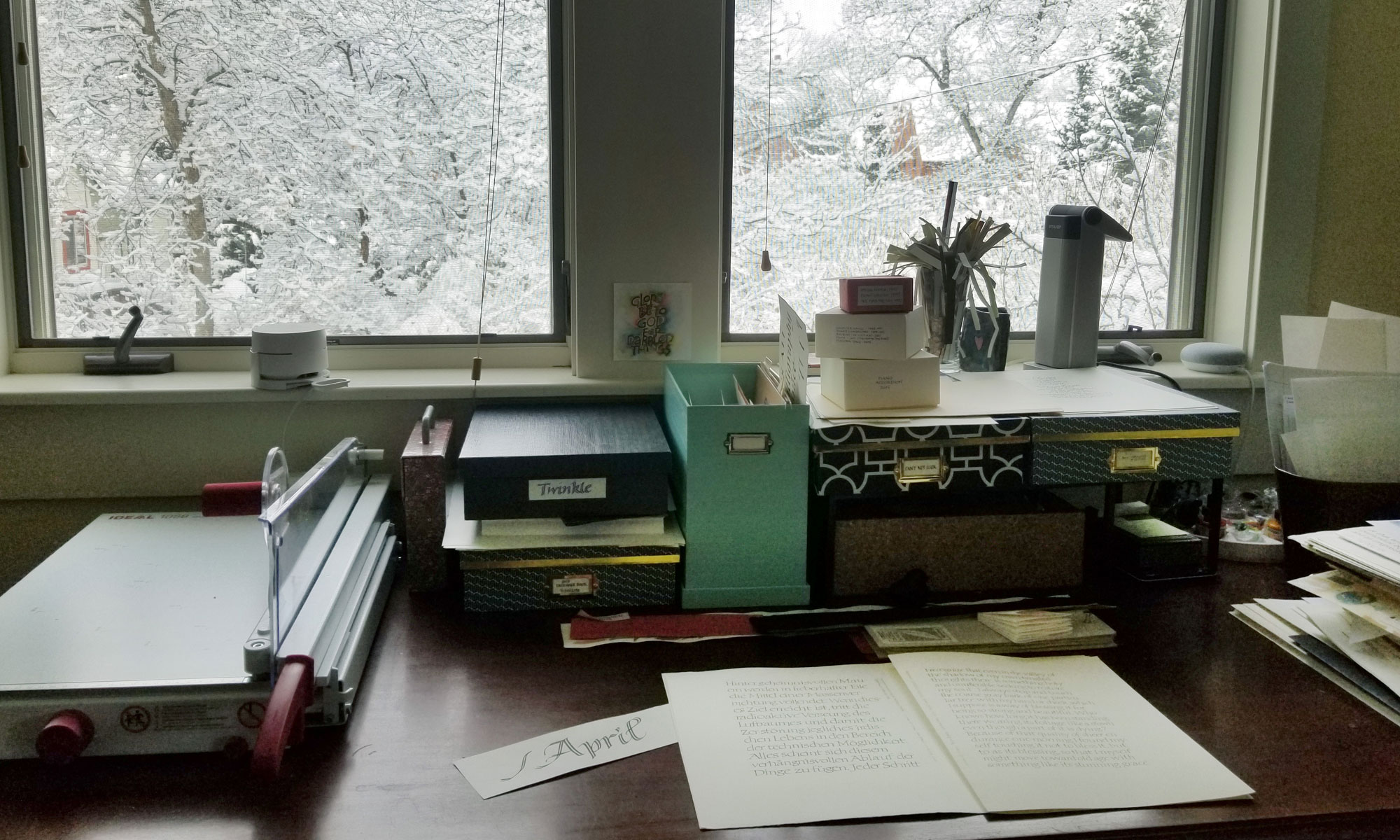
In 2004, we visited Neot Kedumim, a “Biblical Landscape Reserve”. The stated purpose of Neot Kedumim is to “re-create the physical setting of the Bible in all its depth and detail. ” It was a very interesting place, not just growing the plants and products of Biblical Israel but often also showing how they were processed. Visitors could participate in demonstrations which showed, for instance, each of the steps in which wheat growing in the field was harvested, threshed, and ground into flour. The tools were often visually luscious.
There a scribe was demonstrating how some of the materials produced were used to write scrolls. We each got a shot at writing with the homemade ink and reed pens on an interesting but unsized piece of paper. (Of course, our poor efforts couldn’t compete with the scribe’s samples, which he neglected to explain were written on real parchment using a quill, but what are you going to do? Showmanship, eh?) This photo shows the part of his table which features gum acacia and dried pomegranates most prominently. 

Very interesting place, thanks for sharing!
Biblical isreal didn’t use quills, they are a later invention. He is right to use Reeds or metal pens. metal pens have been dug up all over isreal and they ar erefered to in the Bible. Quills really started to be used in mass quantities in the 5th 6th and 7th centuries hence those great bible books. You can see it in the texts.
Annabel, thanks for the comment.
James, I don’t think you read my blog post very carefully. I didn’t say anything about which tools were authentic. I only mentioned that he offered us reed pens and unsized paper, but showed us his quill work on vellum without explaining that he was gtting completely different results because the materials were completely different.